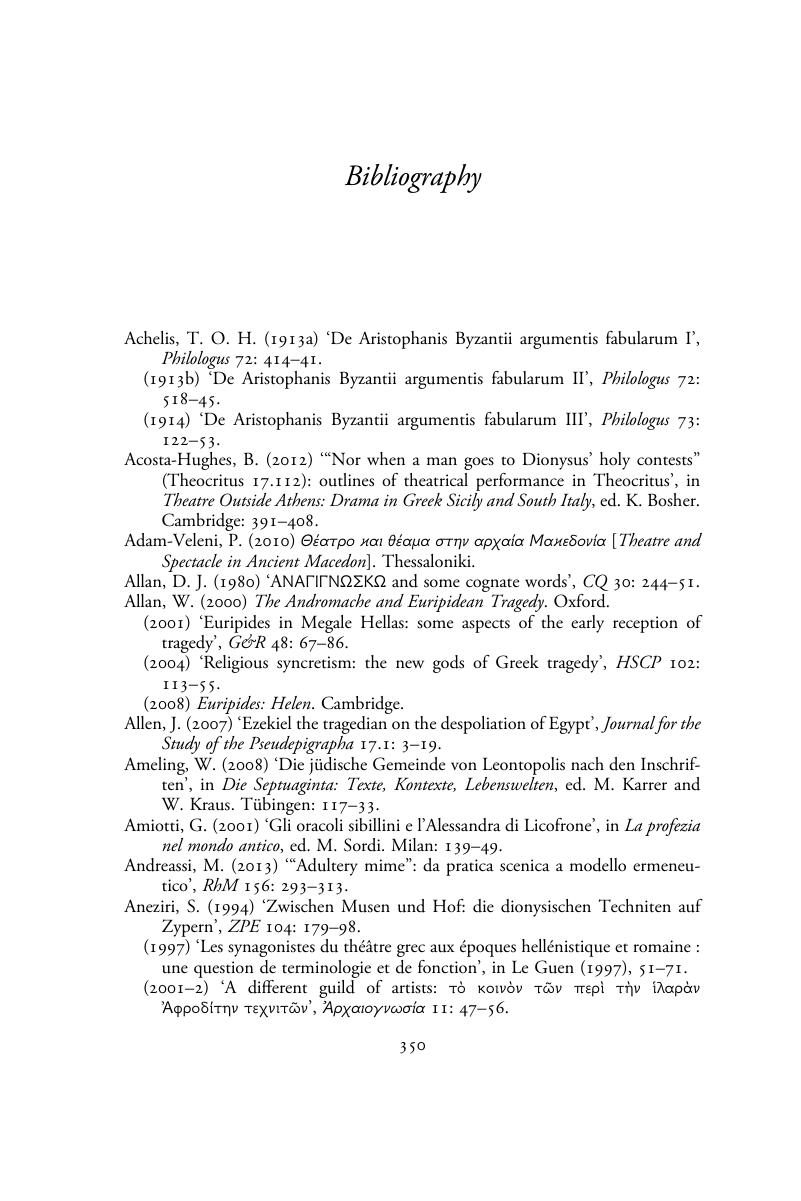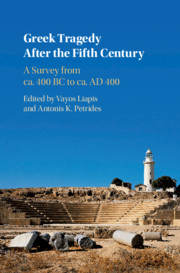Book contents
Bibliography
Published online by Cambridge University Press: 30 November 2018
Summary

- Type
- Chapter
- Information
- Greek Tragedy After the Fifth CenturyA Survey from ca. 400 BC to ca. AD 400, pp. 350 - 391Publisher: Cambridge University PressPrint publication year: 2018



